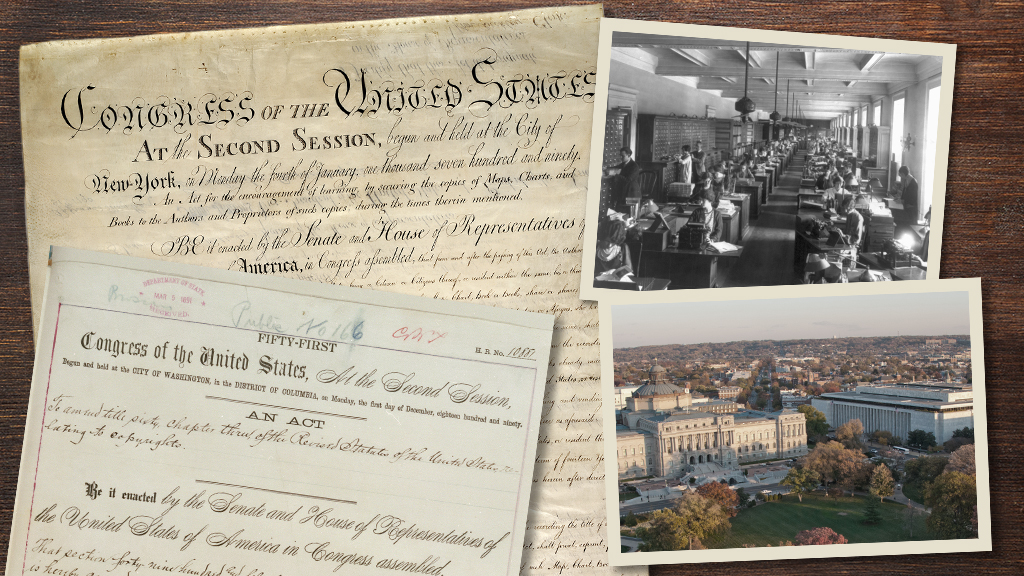On February 25, the U.S. Copyright Office will mark 234 years since the bill that would become the first federal copyright law was introduced to Congress. Many updates to copyright law have taken place since then, including changes to the law that are still in effect today, under the Copyright Act of 1976. Timed with this historic date, the Office has released a new Learning Engine video on the history of copyright and the Copyright Office.
The new video, titled “History of Copyright,” joins twenty-two other videos in our Learning Engine series. The series debuted in 2019 and introduces copyright concepts and the Office to those who may be new to the topics or want to learn more about the copyright system and the Office’s work. The videos are all available on the Office’s website and official YouTube channel. Some of the other videos in the series are a feline-filled video about copyright on the internet, an explainer on fair use, a video that answers the question, “what is the public domain?,” and a video about copyright owners’ exclusive rights.
The new video outlines the history of copyright law and the Office from the writing of the U.S. Constitution through today. Copyright law in the U.S. finds its roots in the Constitution. Article 1, Section 8, Clause 8 gives Congress the power to “Promote the Progress of Science and useful Arts, by securing for limited Times to Authors and Inventors the exclusive Right to their respective Writings and Discoveries.”

Initially, copyright registration took place in U.S. district courts, with the first copyright entry, the Philadelphia Spelling Book by John Barry, in the U.S. District Court of Pennsylvania in 1790. Beginning in 1870, the Library of Congress assumed copyright activities, notably registration, and with its establishment in 1897, the Copyright Office became a separate department within the Library of Congress. Throughout this time and beyond, Congress updated copyright law by extending protection to new types of works, adding new exclusive rights, and increasing the length of the copyright term.

The video traces these key changes throughout the late eighteenth, nineteenth, and early twentieth centuries, and documents a large shift in the copyright system after the passing of the Copyright Act of 1976. As the video moves through developments in the latter half of the twentieth century, audiences see how copyright law adapted to new and emerging technologies and changes in the global conversation about intellectual property. Finally, the video brings audiences into the twenty-first century and highlights two major amendments to copyright law, with the recent passage of the Music Modernization Act in 2018 and the Copyright Alternative in Small-Claims Enforcement (CASE) Act in 2020.
Watch the new video to learn more and trace these changes over time:
Learn more about the history of copyright law, including the Office’s history, in our comprehensive timeline and learn more about the services we provide on our website.
